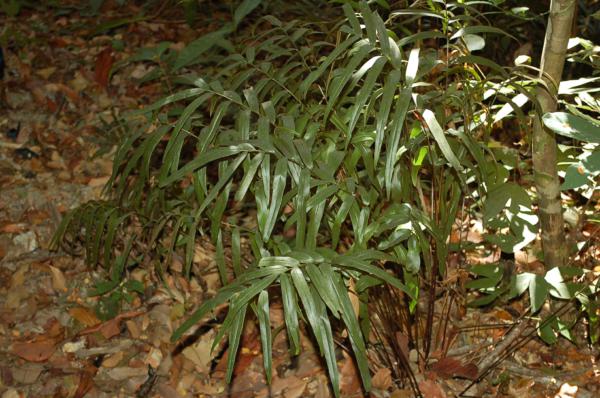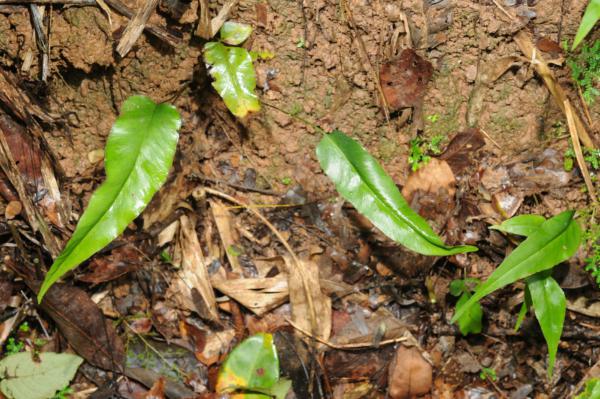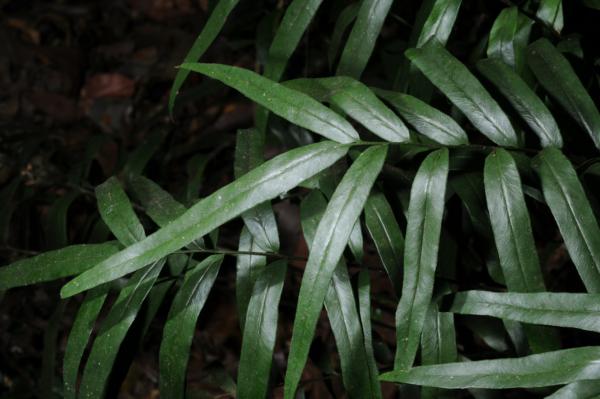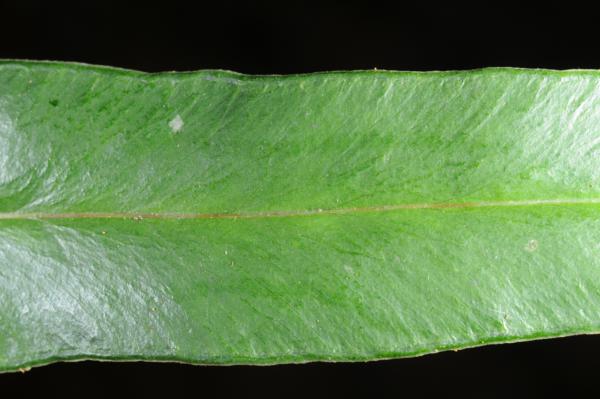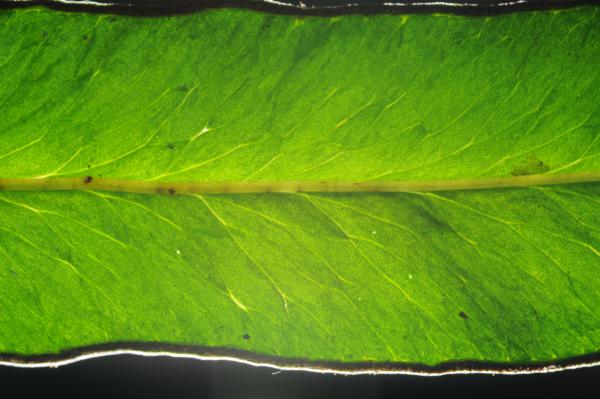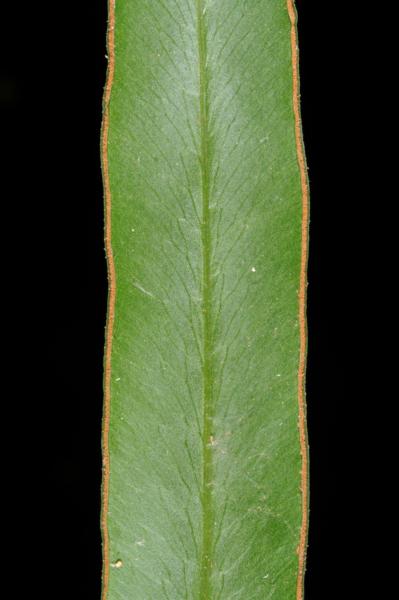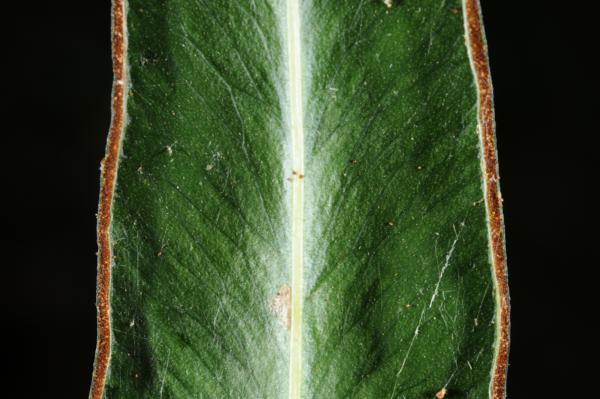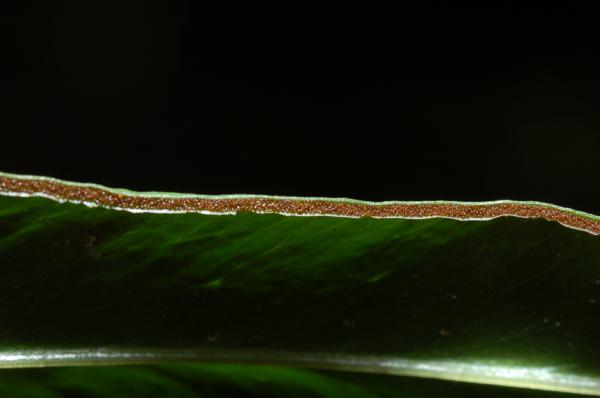
Lindsaea ensifolia Sw.
Family
Lindsaeaceae
Nomenclature
Lindsaea ensifolia Sw., Schrad. J. Bot. 1800(2): 77. 1801; Christ, Bot. Tidsskr. 24: 110. 1901; Hosseus, Beih. Bot. Centralbl. 28(2): 365. 1911; Holttum, Dansk Bot. Ark. 23: 234. 1965; Tagawa & K.Iwats., SouthE. Asian Stud. 5: 74. 1967; Kramer, Fl. Males., Ser. II, Ferns and Fern Allies 3: 211. 1971; Kramer, Gard. Bull. Singapore 26: 32. 1972; Tagawa & K.Iwats., Fl. Thailand 3: 131. 1985; Boonkerd & Pollawatn, Pterid. Thailand: 92. 2000; Newman et al., Checkl. Vasc. Pl. Lao PDR: 27. 2007. – Schizoloma ensfolium (Sw.) J.Sm., J. Bot. 3: 414. 1841; Bedd., Handb. Ferns Brit. India: 80, f. 41. 1883; E.Smith, J. Siam Soc. Nat. Hist. Suppl. 8: 3. 1929; Tardieu & C.Chr., Fl. Indo-Chine 7(2): 129, f. 15.1 & 15.2. 1939; Holttum, Rev. Fl. Malaya ed. 1, 2: 346, f. 200. 1955 [‘1954’]; Holttum, Dansk Bot. Ark. 20: 25. 1961; Seidenf., Nat. Hist. Bull. Siam Soc. 19: 86. 1958; Ching, Fl. Reipubl. Popularis Sin. 2: 273, pl. 23, f. 1–6. 1959.
Lindsaea griffithianum Hook., Sp. Fil. 1: 219, t. 68B. 1846. – Schizoloma griffithianum (Hook.) Fée, Mém. Foug., 5. Gen. Filic.: 108. 1852; C.Chr., Bot. Tidsskr 32: 345. 1916.
Diplazium bantamense auct. non Blume: Christ, Bot. Tidsskr. 24: 108. 1901.
Description
Rhizome creeping, 3–5 mm diam., bearing fronds close together or up to 2 cm apart, brown to darker, scaly at least apically; scales linear, up to 2.5 mm long, 0.3 mm broad, brown, slightly shining. Stipes stramineous or castaneous at least at base. Laminae simply pinnate or rarely simple, ovate to oblong-lanceolate in outline, narrowly ovate with acuminate apex when simple, lateral pinnae (0–)3–7 pairs, linear-lanceolate, caudately acuminate at apex, cuneate, rounded or subtruncate at base, very shortly stalked, entire at margin, up to 20 cm long, 2 cm broad, rather variable, smaller ones about 5 mm broad; terminal pinnae like lateral ones, subcoriaceous; veins anastomosing forming 2–4 rows of areoles at each side of costa, distinct beneath. Sori continuous along margin; indusia firm , nearly reaching the edges.
Distribution in Thailand
NORTHERN: Chiang Mai, Phitsanulok; NORTH-EASTERN: Loei, Nong Khai; EASTERN: Ubon Ratchathani; SOUTH-WESTERN: Kanchanaburi, Phetchaburi; CENTRAL: Nakhon Nayok; SOUTH-EASTERN: Rayong, Chanthaburi, Trat; PENINSULAR: Ranong, Surat Thani, Phangnga, Phuket, Krabi, Nakhon Si Thammarat, Trang, Satun, Yala.
Distribution in Laos
Hua Phan, Vientiane.
Distribution in Cambodia
Kampot, Mondulkiri, Pursat.
Wider Distribution
Old World tropics from W Africa to Australia and Polynesia, north to the Ryukyus.
Ecology
Terrestrial on rather dry slopes or on sandy ground, or rarely on rocks, usually in open areas or in light shade, fairly common and locally abundant throughout Thailand at low to medium altitudes below 1400 m.
Proposed IUCN Conservation Assessment
Least Concern (LC). This species is common and widespread and not under any known threat.
Notes
Extremely variable in the form and size of fronds especially in different habitats; in open sunny places, pinnae become less than 5 mm broad, but in shady places they are more than 2.5 cm broad in the fertile condition; the bases of pinnae are usually broadly cuneate but sometimes narrow or auricled to some extent.
Voucher specimens - Thailand
Middleton et al. 4595, Trat, Ko Chang, Thanmagon Waterfall (E); Middleton et al. 5113, Loei, Phu Suan Sai National Park (E).
Voucher specimens - Laos
Maxwell 99-130, Vientiane (CMU)
Voucher specimens - Cambodia
Long et al. CL478 & CL485, Mondulkiri (P).
Habit
Habit of simple fronded plants
Fronds
Upper surface of pinna
Venation
Lower surface of pinna and marginal sori
Sori
Marginal sori
Site hosted by the Royal Botanic Garden Edinburgh. Content managed by Stuart Lindsay, Gardens by the Bay, Singapore and David Middleton, Singapore Botanic Gardens. Last updated 24 January 2012
